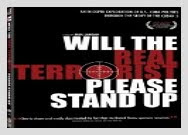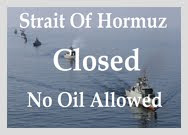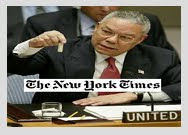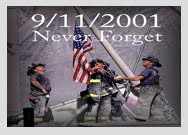 By Anonymous - Posting #196
By Anonymous - Posting #196Secret CIA Documents on Mossad was published in 1982 by CounterSpy magazine. It is purportedly an appraisal of the Israeli Secret Services by the CIA captured by Iranian students when the US embassy was taken. It was published in Iran, and portions were later published in the US not only by CounterSpy but also by the Washington Post (see the CounterSpy Introduction).
It belongs in the archives of the 9/11 Truth Movement and on the internet. [.zip here]
It contains the following passages related to the connection between Zim Shipping and the Mossad:
Other Israeli governement organizations that provide support to the intelligence and security community are the Ministries of Finance (Customs and Excise, Investment and Securities) and tourism, the national airline, El Al, and the national shipping line, Zim. Unofficial Zionist organizations based in Israel and Jewish communities throughout the world also give aid to Israel operations when needed.
The function of intelligence officers under cover of diplomatic establishments is to arrange information exchanges with officials of local services, manage communications, serve as accommodation addresses and funding channels, and direct agents toward targets of interest. Official organizations used for cover are Israeli Purchasing Missions and Israeli Government Tourist, El Al and Zim offices, Israeli constrution firms, industrial groups and international trade organizations also provide nonofficial cover. Individuals working under deep or illegal cover are normally charged with penetrating objectives that require a long-range, more subtle approach, or with actvities in which the Israeli Government can never admit complicity.
It contains the following passage related to false-flag recruitment:
The Israelis have used false-flag recruitment pitches extensively and successfully. In several cases they approached citizens of Western European nations under the cover of a national NATO intellegence organization for operations in Arab target countries.
It contains the following passages related to the ability of Israeli security services to recruit and control Arab agents:
Arabic-speaking IDF interrogators sometimes pose as Arab officers and circulate among prisoners to elicit information. These techniques usually produce a large quantity of information from captured enemy personnel.
Some younger Mossad officers, who may be weak in certain fields of higher education or languages, are sent to universities abroad, where their pursuit of an advanced degree simultaneously serves as cover for their extracurricular operational activities. One of the established goals of the intelligence and security services is that each officer be fluent in Arabic. A nine-month, intensive Arabic language course is given annually in the Tel Aviv area to students from each service.
Mossad officers who are going into Arab operations take the same Arabic language training as Shin Beth officers. As further training, these Mossad officers work in the Administered Territories [i.e., the West Bank — ed.] for two years to sharpen their language skills before being posted abroad. During this period they usually serve in the Sinai and often run Bedouin agents into Egypt in conjunction with Military Intelligence.
Many Israelis have come from Arab countries where they were born and educated and appear more Arab than Israeli in speech, demeanor, and attitude. By forging passports and identity documents of Arab and western countries and providing sound background legends and cover, Mossad has successfully sent into Egypt and other Arab countries Israelis disguised and documented as Arabs or citizens of European countries.
There are numerous persons in Israel who have a thorough area and language knowledge of any area of interest to the intelligence services. These area experts can render extremely valuable assistance in analyzing intelligence information and formulating country requirements, thus contributing to the total operational potential since they enable Israeli intelligence officers to estimate rapidly the efficiency and reliability of their agents and informants. These persons are also useful for their ability to pass completely for a citizen of the nation in question The Israeli talent for counterfeiting or forging passports and documents ably supports the agent's authenticity.
Through the use of informants, who may be local Arabs or Oriental Jews posing as Arabs, Shin Beth has penetrated subversive Arab elements including communist cells and Arab nationalist groups. They have also picked up local Arab espionage agents on their way back to neighboring countries and doubled them in coordination with Military Intelligence.
It contains the following passages relating to Mossad's ability to operate clandestinely in North America, and its propensity to "create disturbances" with a view to the psychological impact of those disturbances:
Individuals working under deep or illegal cover are normally charged with penetrating objectives that require a long-range, more subtle approach, or with activities in which the Israeli Government can never admit complicity.
Mossad directs clandestine operations throughout Europe, including the USSR and East European countries; North and South America; the Near East; Africa; and the Far East, including South East Asia. Mossad activities are generally conducted through Israeli official and semiofficial establishments, deep cover enterprises in the form of firms and organizations, some especially created for, or adaptable to, a specific objective, and penetrations effected within non-Zionist national and international Jewish organizations.
Mossad also is charged with inciting disturbances calculated to create mutual distrust among the Arabs and to draw Western sympathy away from the Arab cause.
In brief, the document shows that everything that the Israeli secret services would have had to do, in order to accomplish the criminal acts of September 11, 2001, the CIA had evidence to suppose that the Israelis either had done or were capable of doing prior to 1982.
Editor's Comment
Positive evidence for Israeli involvement in 9/11 is patchy. There is the fact that on 9/11 the Twin Towers were owned by two men with Israeli loyalties: Larry Silverstein and Frank Lowy. There are the five dancing schlomos. There is Benjamin Netanyahu's statement that the 9/11 attack was "very good" for Israel. In addition to 9/11 providing a pretext for the U.S. government to nullify domestic civil liberties it also provided a pretext for the U.S. to declare a "war on terror" which in practice has been a war on Arab countries with strategic economic assets such as oil or could provide an oil pipeline. This has suited Israel just fine, because it is surrounded by Arab countries who (rightly) despise it and would be delighted if the state of Israel ceased to exist.
In a false-flag operation — that is, an operation in which the identity of the real or primary perpetrator is concealed and some other agent is made to appear as the (sole) perpetrator — it is common to use patsies: people who may or may not participate in the operation (whether or not they understand their true roles) and who may publicly be blamed as soon as the dust settles.
The attack on the Twin Towers had 19 patsies. These were the people whom the FBI announced (together with their pictures), soon after the event, were the Arab terrorists who allegedly were responsible (this became the official story). Some of these may have had no connection with the operation, but some (in particular "Mohammad Atta" — or the two "Mohammad Attas", one in the US and one in Germany) may have been recruited for their roles. Mossad would have had no trouble in finding such people.
Although some patsies may have had roles to play (e.g., to be captured on video when catching a connecting flight from Portland (Maine) to Boston on the morning of 9/11), or even actually to have been passengers on some or all of the four Boeing airliners allegedly used in the attacks, it is doubtful that any had a hand in the work on the Twin Towers required for their controlled demolition.
That the Twin Towers were brought down in a controlled demolition follows from the fact that it is highly unlikely that the impacts of the airliners and the resulting fires were sufficient to bring them down. The impacts did not cause them to fall because they were still standing 56 minutes (South Tower) and 1 hour and 44 minutes (North Tower) after impact, and no other steel-structure building has ever collapsed as a result of fire (see here). In late August 2011 Architects & Engineers for 9/11 Truth released a documentary video in which numerous highly qualified engineers denied that the official explanation for the collapse of the three buildings (WTC1, WTC2 and WTC7) was at all credible. These engineers strongly suggest that the collapse of the three buildings was actually a controlled demolition, but it is unlikely that Israel itself — or any US company (with or without connections to Israel) — possessed the necessary expertise in controlled demolition (of 100-storey buildings no less) to bring this about.
There are four possible ways in which the Twin Towers may have been demolished:
* Self-demolition capability:
It is not impossible that the Twin Towers were constructed in the early 1970s with such a capability, but this is unlikely because the controlled demolition expertise required did not exist at that time, and in any case it is likely that the architect intended them to last 100 years or more, and had no thought of their ever needing to be destroyed. But it is not impossible that a self-destruct mechanism might have been built in sometime in the 1990s after the first attack, but there is no evidence of this.
* Chemical explosives:
Since the Twin Towers exploded (they did not just collapse) this is an obvious possibility, but it is unlikely because of the amount of explosive material that would be needed and the amount of time and effort that would be required to rig the towers for this effect. It has recently been suggested that nanothermite was the explosive used. This hypothesis suffers from the defect that it has never been shown that nanothermite has sufficient explosive power to produce the effects which were witnessed on 9/11 (see here).
* Mini H-bombs:
When one thinks of H-bombs one tends to think of the massive explosions seen in Pacific atoll tests in the 1950s. However, in the forty years 1960-2000 huge amounts of money, time and intellectual ability were invested by the US in the development by the Pentagon of atomic weapons technology, and one possible result of this would be mini H-bombs. One of these in the basement of each of the Twin Towers might have been sufficient (due to the extremely high temperatures produced in a thermonuclear explosion) to vaporize most of the steel (resulting in the huge amounts of dust observed). For more on this see here.
* Black technology:
This term refers to technological capabilities developed in secret (in particular, by the Pentagon) about which nothing has ever been published. This includes so-called directed energy weapons. Since there is no public information confirming the existence of such capabilities this possibility remains speculative.
This editor inclines to the view that the Twin Towers were brought down by the use of mini H-bombs, and that the assertion that nanothermite was responsible is a red herring, intended to distract attention from the possible use of mini H-bombs or black technology, both of which would implicate the Pentagon.
Thus although it is entirely plausible that Israel was involved in the attacks of 9/11 the principal perpetrators must have been elements within (or closely connected to) the US Administration
WAKE UP AMERICA!!!....Its "OUR" country!!!
Love "Light" and Energy
_Don
References:
Secret CIA Documents on Mossad
Counterspy - An Introduction
Israeli Company Mum About WTC Pullout
Who Destroyed the WTC? (Connect the dots)
Frank Lowy, Zionism and 9/11
Five Dancing Arrested Celebrating MOSSAD's 9/11 False Flag
Netanyahu Says 9/11 Was Good For Israel
Wars for Oil
America's Pipe Dream
Tracking the 19 Hijackers
The Official Story: The Twin Towers
MOHAMED ATTA WORKED FOR ELITE U.S.
Mohamed Atta:Terrorist, Patsy, or Scapegoat?
Evidence that Flights AA 11 and AA 77 Did Not Exist on 9/11
Other Fires in Steel-Structure Buildings
Architects & Engineers for 9/11
Did the Twin Towers Collapse on Demand?
Has nanothermite been oversold to the 9/11 Truth community?
Military Expert on 9/11
The Journal of 9/11 Research (See SAIC)
The Perpetrators
Bush’s Crusades and the Carlyle Group
![Friday, June 13, 2015 - [[[[[[[[[[[[[[[[[[[[[[ National Whistleblower Center ]]]]]]]]]]]]]]]]]]]]]]](http://1.bp.blogspot.com/-hCkUIsHGvuY/VXsw0bXOUlI/AAAAAAAAB0Q/u6rCwrgbBJ8/s1600/NWC.jpg)
![Monday, August 11, 2014 - [[[[[[[[[[[[[[[[[[[[[[[[[[[[ Project - N.N.O.M.Y ]]]]]]]]]]]]]]]]]]]]]]]]](http://3.bp.blogspot.com/-X-neeBogYUY/U-kFwAlfUVI/AAAAAAAABxY/-fFCz1QNdro/s1600/NNOMY.bmp)
![Monday, August 11, 2014 - [[[[[[[[[[[[[[[[[[[[[[[[[[ Project - Y.A.N:D ]]]]]]]]]]]]]]]]]]]]]]]]]]]](http://2.bp.blogspot.com/-p70w5rTrJog/U-kFfaFFHWI/AAAAAAAABxM/xCqqlATpI6g/s1600/Project%2BYAND.bmp)
![Sunday, July 13, 2014 - [[[[[[[[[[[[[[[[[[[[[[ One Nation Under Surveillance ]]]]]]]]]]]]]]]]]]]]]]](http://2.bp.blogspot.com/-Pz6EVdcyNfE/U8fBFwtNSvI/AAAAAAAABwc/e9oIlfmc4No/s1600/BRIC.jpg)
![Saturday, January 18, 2014 - [[[[[[[[[[[[[[[[[[[ Nullify The NSA - OFFNOW.org ]]]]]]]]]]]]]]]]]]]]](http://2.bp.blogspot.com/-zNM3P7onLL4/UtmpQPbaZqI/AAAAAAAABvw/WE131e9AlZk/s1600/NullifyNSAB.jpg)
![Saturday, January 18, 2014 - [[[[[[[[[[[ Whatis Taxed.com - Income Tax Research ]]]]]]]]]]]]](http://1.bp.blogspot.com/-a7oQXJHJr6M/UvKAs5ftNKI/AAAAAAAABwA/LZh-sZvLPis/s1600/Side.bmp)
![Thursday, Sept 11, 2014 - [[[[[[[[[[[[[[[[[[[[ The Lone Gladio By Sibel Edmonds ]]]]]]]]]]]]]]]]]]]](http://3.bp.blogspot.com/-dEk2E8qGqoY/VBNhNwKG7rI/AAAAAAAABx4/zL2R6DEfa0I/s1600/The%2BLone%2BGaldio.bmp)
![Thursday, Sept 11, 2014 - [[[[[[[ Bin Laden Worked With U.S. Government After 9/11 ]]]]]]](http://2.bp.blogspot.com/-BvDHxrvoViQ/UZjqj_ssttI/AAAAAAAABrs/DWigJUmUtHI/s1600/Bin%2BLaden.bmp)
![Thursday, Sept 11, 2014 - [[[[[[ U.S. Government 'Directly Involved' In Terror Plots ]]]]]](http://3.bp.blogspot.com/-dhQLNsDMYfA/U9fCTakUoLI/AAAAAAAABw8/mDlURpm7BXc/s1600/The%2BReal%2BTerrorist.bmp)
![Thursday, October 12, 2015 - [[[[[[[[[[[[[[ The Attacks Will Be Spectacular ]]]]]]]]]]]]]]](http://4.bp.blogspot.com/-a0K0rfH-UiA/VkjrYZN4S7I/AAAAAAAAB0o/NbQSSI0E4Ok/s1600-r/TheAttacks.bmp)
![Thursday, Sept 11, 2014 - [[[[[[[[[[[[[[[[[[[[[[[[[ We Will N.E.V.E.R. Forget ]]]]]]]]]]]]]]]]]]]]]](http://3.bp.blogspot.com/-k9B0tV_Cv-0/VBHp67tknbI/AAAAAAAABxo/KV9f9vwB5jk/s1600/We%2BWill%2BNever%2BForget%2BBoarder.bmp)

















